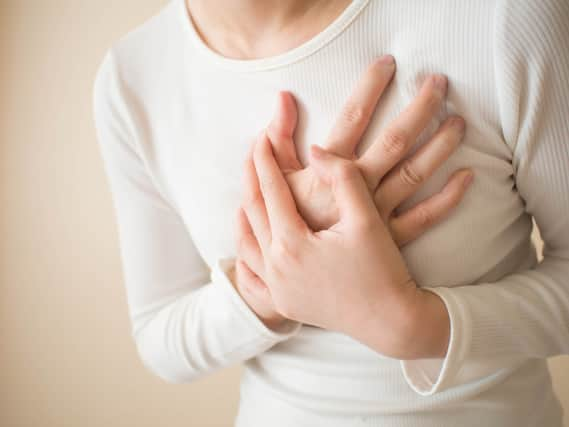These are the unexpected signs of cardiac arrest for women


According to a new study by the European Heart Journal, women are less likely to receive help from bystanders if they suffer from a cardiac arrest outside of a hospital environment.
This is because the general public are unable to spot the signs of cardiac arrest in women, leading to a delay in taking action - both in phoning for help and for resuscitation. For this reason, women are less likely to survive than men.
What did the study find?
Advertisement
Hide AdAdvertisement
Hide AdThe research was conducted by the University of Amsterdam and headed by cardiologist Dr Hanno Tan.
“Men and women did not receive equal treatment when suffering a cardiac arrest in the community,” said the study.
“An important factor in this was that people did not recognise that women who collapsed were having a cardiac arrest, leading to delays in calling the emergency services and delays in providing resuscitation treatment.”
Analysing the data from resuscitation attempts made by emergency services between the years of 2006 and 2012, the study found that only 68 per cent of women were likely to receive a resuscitation attempt by a bystander, versus 73 per cent of men.
Advertisement
Hide AdAdvertisement
Hide AdThe study also said, “Survival from the time of the cardiac arrest to admission to hospital was lower in women (34 per cent versus 37 per cent), and women were less likely to survive from admission to discharge (37 per cent versus 55 per cent).”
Overall, the study found, the chances women held of surviving their cardiac arrest to be discharged from hospital was about half of that of men.
The researchers undertaking the study believe that can be explained by the lower rate of something called “shockable initial rhythm” in women (33 per cent versus 52 per cent).
The difference between cardiac arrest and a heart attack
Cardiac arrest and heart attacks are different and exhibit different symptoms.
Advertisement
Hide AdAdvertisement
Hide AdCardiac arrest occurs when the heart goes into an irregular rhythm, which is then followed by the heart ceasing to beat altogether.
A heart attack is a blockage in the blood supply to the heart, which is generally accompanied by chest pains, breathlessness and feeling faint.
A heart attack is the most common cause for cardiac arrest according to the NHS, so being able to identify these symptoms is key.
The signs in women compared to men
While films and TV shows depict the symptoms as a man grabbing his chest and collapsing, the signs in women are a lot different.
Advertisement
Hide AdAdvertisement
Hide AdThey are less easy to quickly identify as an impending heart attack, with signs including:
FatigueFaintingVomitingNeck and jaw pain
Men are much more likely to report the typical experiences of chest pain.
Studies have also shown that heart attacks without any symptoms are more likely to occur in women rather than men. The women that might experience a heart attack are also likely to be older than the men that do.
“It's important to stress that not everyone experiences severe chest pain - the pain can often be mild and mistaken for indigestion,” said the NHS.
What to do if you see someone having a heart attack
Advertisement
Hide AdAdvertisement
Hide AdIf you see someone who may be experiencing a heart attack, or cardiac arrest, then there are a few things you can do to help.
First and foremost, call 999 and ask for an ambulance. Whilst waiting, the NHS states that the person experiencing the heart attack needs to rest to avoid putting unnecessary strain on their heart.
“If aspirin is easily available and the person who has had a heart attack isn't allergic to it, slowly chew and then swallow an adult-sized tablet (300mg) while waiting for the ambulance,” advises the NHS.
“The aspirin helps to thin the blood and restore the heart's blood supply.”
What to do if it’s a cardiac arrest
Advertisement
Hide AdAdvertisement
Hide AdIf someone is experiencing cardiac arrest, you should still call 999 and get medical help as soon as possible.
The British Heart Foundation (BHF) states that, after calling 999, you should start CPR. You can read about how to perform CPR on the BHF website. The next step is finding a publicly available defibrillator.
“You don’t need to be trained to use a defibrillator – anyone can use it. There are clear instructions on how to attach the defibrillator pads,” says the BHF.
“It then assesses the heart rhythm and will only instruct you to deliver a shock if it’s needed.”
Advertisement
Hide AdAdvertisement
Hide AdYou can see a map of available defibrillators on this map by Heart Safe.
Heart Safe says, “When you dial 999 the Ambulance Call Handler will ask a series of questions and should your patient require it, they will identify the nearest available defibrillator to you, and give you access details.”
This article originally appeared on our sister site The Scotsman